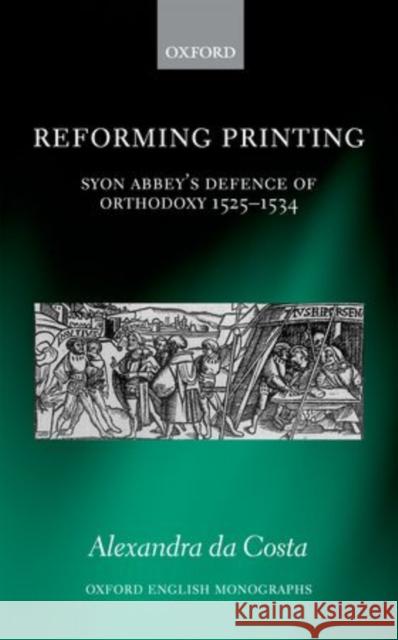Reforming Printing: Syon Abbey's Defence of Orthodoxy 1525-1534 » książka
Reforming Printing: Syon Abbey's Defence of Orthodoxy 1525-1534
ISBN-13: 9780199653560 / Angielski / Twarda / 2012 / 288 str.
This book investigates how Syon Abbey responded to the religious turbulence of the 1520s and 1530s. It examines the eleven books three brothers - William Bonde, John Fewterer and Richard Whitford - had printed during this period and argues that the Bridgettines used vernacular printing to engage with religious and political developments that threatened their understanding of orthodox faith. Through these works - and their some twenty-six editions - the Abbey presented itself as part of the vanguard of the Church, fighting heterodoxy with a three-fold commitment to reformed spiritual leadership, vernacular theology and the spiritual education of the laity. It used its printed books to to augment inferior parochial instruction; bolster orthodox faith and contradict evangelical argument; resist Henry VIII's desire for ecclesiastical supremacy; and defend the monastic way of life.
The book has three principal aims. First, to continue the debate about the nature of late medieval Catholicism by directing attention to one community that publicly proclaimed a very specific Catholic identity. Second, to highlight the shifting nature of that identity, which developed continuously in response to evangelicalism. Third, to emphasise the importance and impact of conservative vernacular theology in this period.
Reforming Printing makes a strong contribution to our understanding of the Bridgettine community of Syon Abbey, and more generally the monastic and Catholic response to the developments that culminated in Henry VIII's break with Rome. It sheds new light upon the religious climate of the 1520s and 30s and will be of considerable interest to literary scholars and historians of the English Reformation, especially those working on early modern religious writing.











